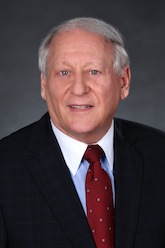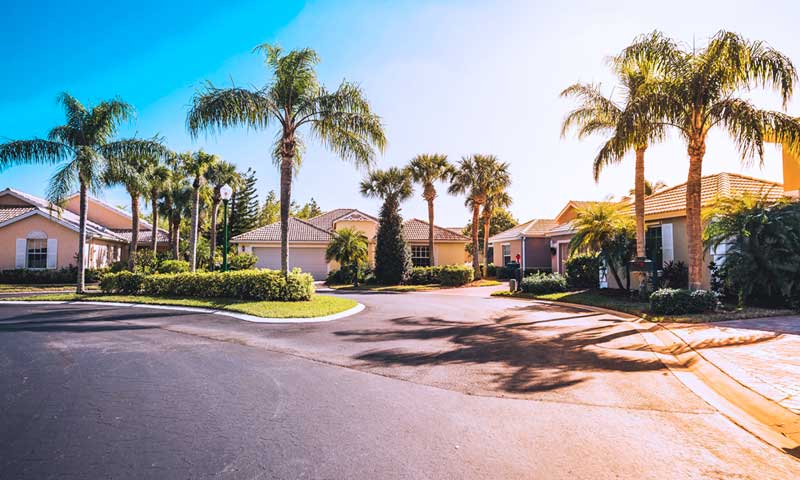BLOG
 Firm partner Michael L. Hyman was featured in a “Profiles in Law” article by the Daily Business Review, South Florida’s exclusive business daily and official court newspaper. The article, which appears in today’s edition of the newspaper, chronicles his career as one of the founders of community association law as a legal specialty in Florida.
Firm partner Michael L. Hyman was featured in a “Profiles in Law” article by the Daily Business Review, South Florida’s exclusive business daily and official court newspaper. The article, which appears in today’s edition of the newspaper, chronicles his career as one of the founders of community association law as a legal specialty in Florida.
The profile, which is written by DBR reporter Samantha Joseph, reads:
Michael Hyman’s journey into law reads like a series of fortunate coincidences.
It starts with a friend on his way to take the law school admission test stopping by and inviting Hyman to join him. It was the mid-1960s—decades before Hyman would contribute to shaping Florida real estate law, battle developers and help free condominium buyers in a then-emerging market from clauses buried in 99-year ground leases to escalate rents for shared amenities.
Back then, before he was shareholder at Siegfried Rivera Hyman Lerner De La Torre Mars & Sobel in Coral Gables, Hyman taught English and journalism to students five years his junior at a Hialeah high school, earning a $4,700 salary. His soon-to-be-wife, Iris, was completing her senior year of college, and he’d started considering career moves to support a young family. He knew little about law school, even less about being an attorney and had never considered taking the entrance test.
“I loved teaching, but it was a very different story to think about getting married and having kids,” Hyman said. “A friend of mine said he was going the next morning to take the law school admission exam. He picked me up. Without going to any type of tutelage or anything, I walked in, took an academic exam and did well enough to get admitted to University of Miami and UF.”
The article concludes:
The spontaneous decision to attend law school set in motion a chain of events that put Hyman at the center of a burgeoning real estate market, just as Miami Beach and other parts of South Florida transitioned from suburbs with single-family homes to trendy hotspots dotted with fashionable condominiums.
“It was just very fortuitous,” he said. “It turned out that this was the place that I was supposed to be.”
By the time he graduated in 1968, a freshly minted Condominium Act governed developers and provided a blueprint for creating the multifamily ventures. But the law included few protocols for buyers spending about $6,000 to purchase units in a development they now had to jointly run, maintain and repair. The environment was ripe for conflict and created a new need for condo association attorneys to assist frazzled owners.
“All of a sudden they had the responsibility of running a business,” Hyman said. “There were a lot of questions, but there weren’t a lot of answers.”
His law partner at the time, Lee Weissenborn, would later become a state senator. But back in the late 1960s, the pair were practicing insurance defense law and getting a deluge of inquiries about construction defects, condominium governing documents or declarations, unpaid assessments and other litigious issues with little or no legal precedent in South Florida.
“The work started coming in. People who were buying weren’t quite sure what to do, and they needed guidance,” Hyman said. “Today it’s hard to meet a person who doesn’t live in a condominium or a homeowners’ association. If you look out your window … as a far as you can see, it’s one building after another. But in in the beginning, it was a retirement motif. Retirees from the north were coming for the weather … and lived in mini resorts with people their same age. Today it’s a whole different view. Now you have everything from extremely wealthy people from all over the world to locals who don’t want single-family homes.”
Much of the groundwork for creating the current condo market took place in the ’70s and ’80s when Hyman and other innovators filed federal lawsuits to free communities from triple net leases that left buyers responsible for paying developers rent for shared recreational amenities, plus all real estate taxes, building insurance, maintenance fees and utilities for up to 99 years. Their work changed the landscape for buyers and carved out a now well-respected practice area for attorneys representing condominium, homeowners’ and community associations. It also made the Coral Gables attorney a leading authority on the subject and a shareholder at a firm that represents more than 800 associations, according to its website.
Our firm salutes Michael for his profile article in the Daily Business Review. Click here to read the complete article in the newspaper’s website (registration required).

